
Blue smoke from the exhaust
Content
When the car is running, combustion products are emitted from the exhaust, which have passed the stage of sound damping and neutralization of harmful substances. This process is always accompanied by the formation of smoke. Especially if the engine is still cold, and the weather is damp or frosty outside, the smoke will be thicker, since it contains a large amount of condensate (where does it come from, it says here).
However, often the exhaust does not just smoke, but has a certain shade that can be used to determine the condition of the engine. Consider why exhaust smoke is blue.
Why does it smoke blue smoke from the exhaust pipe
The only reason the smoke has a bluish tint is because the engine oil is burning in the cylinder. Often this problem is accompanied by accompanying engine malfunctions, for example, it starts to run, oil constantly needs to be topped up, idling of the unit is impossible without gas filling, starting the engine in cold weather (most often a diesel suffers from such a problem) is very difficult, etc.

You can use a simple test to determine if oil has entered the muffler. We start the engine, take a sheet of paper and substitute it to the exhaust. If the pipe throws out drops of oil, greasy spots will appear on the sheet. The result of this check indicates a serious problem that cannot be ignored.
Otherwise, expensive repairs will have to be performed. In addition to the engine capital, the catalytic converter will have to be changed very soon. Why grease and unburned fuel should not be allowed to enter this element, is described in separate review.
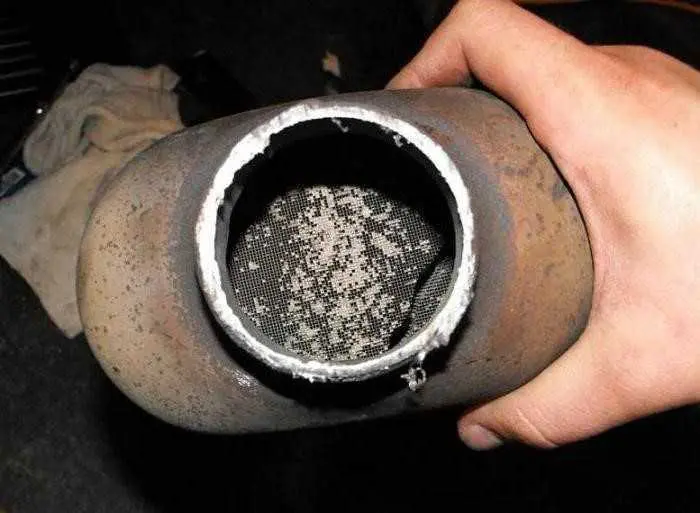
Usually, an old engine, which is approaching a major overhaul, will smoke with a bluish exhaust. This is due to the high production on the parts of the cylinder-piston group (for example, wear of the O-rings). At the same time, the compression in the internal combustion engine decreases, and the power of the unit also decreases, due to which the acceleration of the vehicle becomes less dynamic.
But it is not uncommon for blue smoke to appear from the exhaust pipe and some new cars. This is often observed during warming up in winter. When the engine is hot, the effect disappears. This can happen when a motorist uses synthetic oil, and semi-synthetics or mineral water in general is indicated in the car's operating instructions (read about the difference between these materials here).
This happens when liquid lubricant in a cold engine penetrates through the compression rings into the cylinder cavity. When gasoline (or diesel) ignites, the substance is partially burned, and the rest will fly into the exhaust manifold. As the internal combustion engine warms up, its parts expand slightly from temperature, due to which this gap is eliminated, and the smoke disappears.
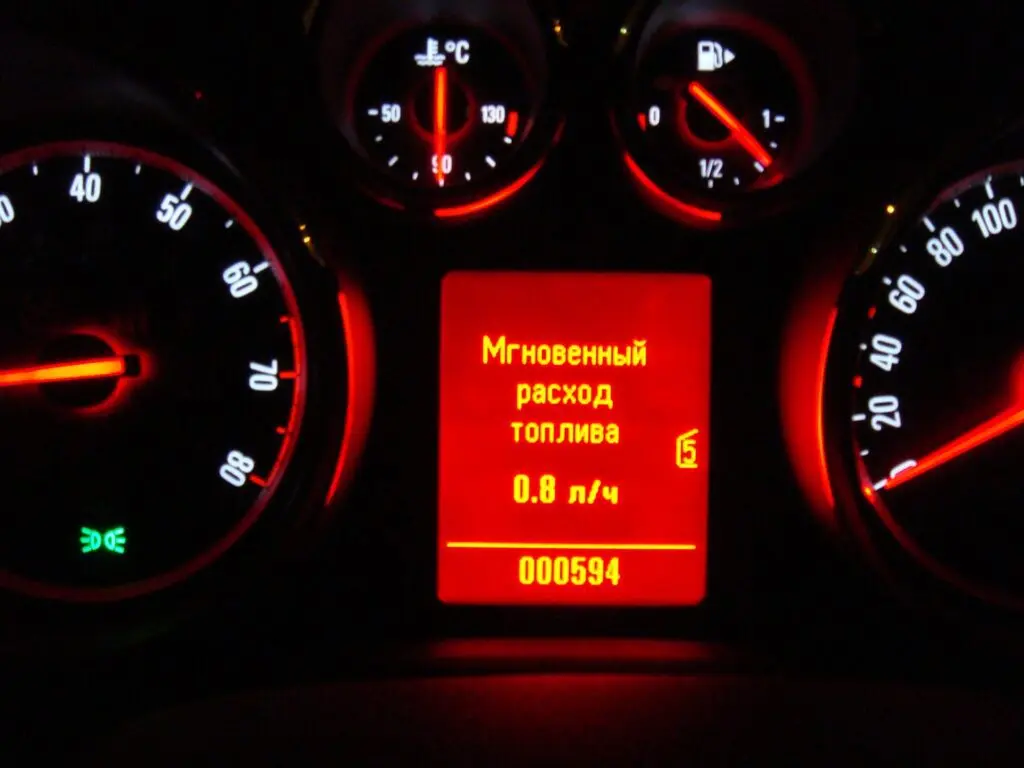
The following factors affect the smoke content of the motor:
- How hot is the internal combustion engine (read about the operating temperature of the engine in another article; as for the temperature regimes of the diesel engine, read here);
- Does the engine oil meet the requirements of the ICE manufacturer;
- The number of revolutions of the crankshaft during warm-up and driving;
- The conditions in which the car is operated (for example, in damp and cold weather, condensation forms in the exhaust system, which can be removed by fast driving on the highway at stable rpm).
Most often, the first signs of problems with the engine and the ingress of oil into the cylinder can be seen with abundant smoke (autumn and winter), while the car is warming up. Regularly checking the oil level in the sump will help determine that the engine has started taking grease and needs to be refilled.
In addition to the blue in the exhaust, the following factors may indicate the presence of oil in the cylinders:
- The power unit begins to triple;
- The engine begins to consume a large amount of lubricant (in advanced cases, this figure can increase to 1000 ml / 100 km);
- A characteristic carbon deposit appeared on the spark plugs (for more details on this effect, see another review);
- Clogged nozzles, due to which diesel fuel is not sprayed into the chamber, but pours into it;
- Compression falls (about what it is, and how to measure it, read here) either in all cylinders, because in one of them;
- In the cold, the engine began to start worse, and even stall during operation (it is often observed in diesel engines, since in their case the quality of fuel combustion depends on the compression);
- In some cases, it can smell of smoke that enters the passenger compartment (in order to warm the interior, the stove takes air from the engine compartment, where smoke can enter if the car is stationary and the wind blows in the street from behind).
How oil gets into cylinders
Oil can enter the cylinder through:
- Coked compression and oil scraper rings mounted on pistons;
- Through the appeared gap in the valve guide sleeve, as well as due to wear of the valve stem seals (valve oil seals);
- If the unit is equipped with a turbocharger, then malfunctions of this mechanism can also lead to the ingress of oil into the hot part of the exhaust system.
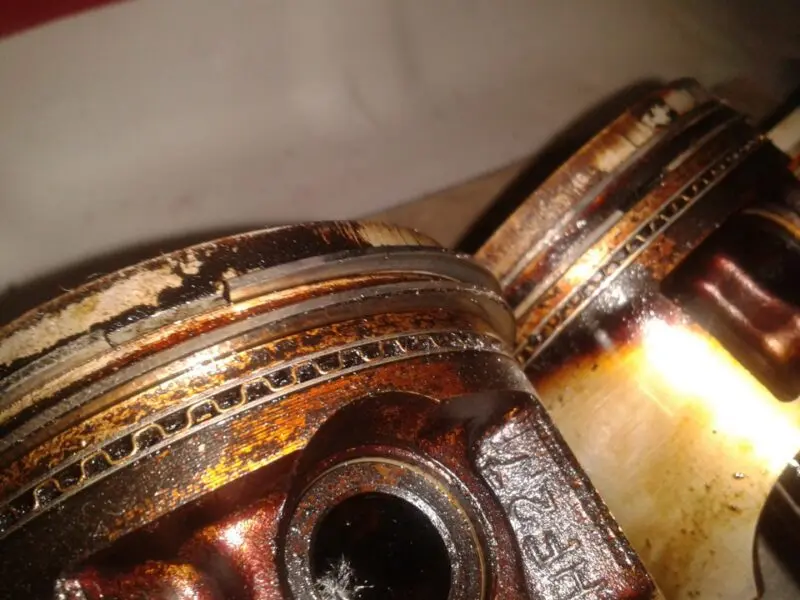
Why does oil get into cylinders
So, oil can get into a hot exhaust system or an engine cylinder with the following malfunctions:
- The valve oil seal is worn out (for more details about replacing this part, see here);
- The tightness of the valve (one or more) has broken;
- Scratches have formed on the inside of the cylinders;
- Stuck piston rings or breakage of some of them;
- The geometry of the cylinder (s) is broken.
When the valve burns out, it immediately becomes noticeable - the car is less dynamic. One of the signs of burned-out valves is a sharp decrease in compression. Let's take a closer look at these problems below.
Worn valve stem seals
Valve oil seals must be flexible. They are mounted on the valve stem to remove lubricant from the valve stem to prevent wear. If this part becomes stiff, it compresses the stem worse, causing some of the grease to seep into the cavity of the inlet or outlet.
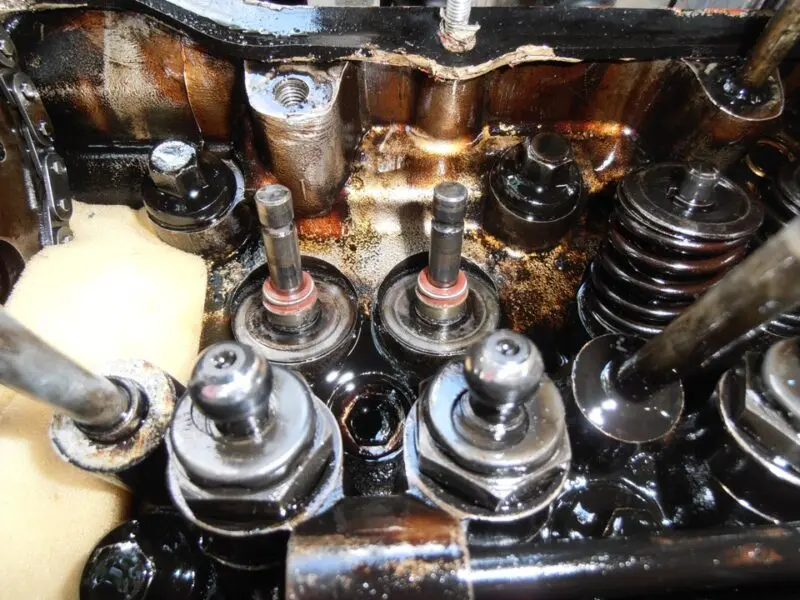
When the driver uses engine braking or starts the car by coasting, through hardened or cracked caps, more oil enters the cylinder or remains on the walls of the exhaust manifold. As soon as the temperature in the cavity rises, the grease begins to smoke, forming smoke with a characteristic shade.
Defects in the condition of the cylinders
This can happen when debris, such as grains of sand with air, gets into the cylinder if the air filter is torn. It happens that when replacing or checking spark plugs, the motorist is inaccurate, and dirt from the near-eternal space gets into the spark plug well.
During operation, foreign abrasive particles get between the piston ring and the cylinder wall. Due to the strong mechanical effect, the surface mirror is scratched, grooves or scuffs form on it.
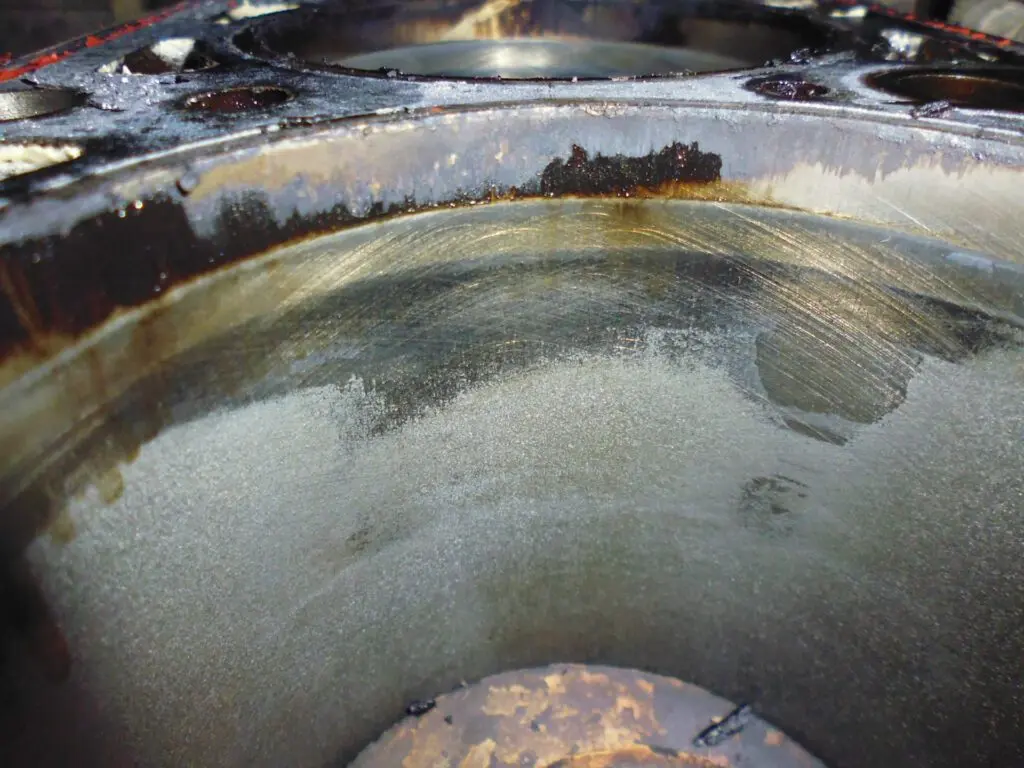
This leads to a violation of the tightness of the pistons and cylinders, due to which the oil wedge is not enough, and the lubricant begins to appear into the working cavity.
Another reason for the appearance of abrasive particles in cylinders is poor-quality oil. Some motorists ignore the regulations for changing the lubricant, and with it the oil filter. For this reason, a large amount of metal particles accumulate in the environment (they appear as a result of depletion on other parts of the unit), and gradually clog the filter, which can lead to its rupture.
When the car is stationary for a long time, and its engine does not start periodically, rust may appear on the rings. As soon as the engine starts, this plaque scratches the cylinder walls.
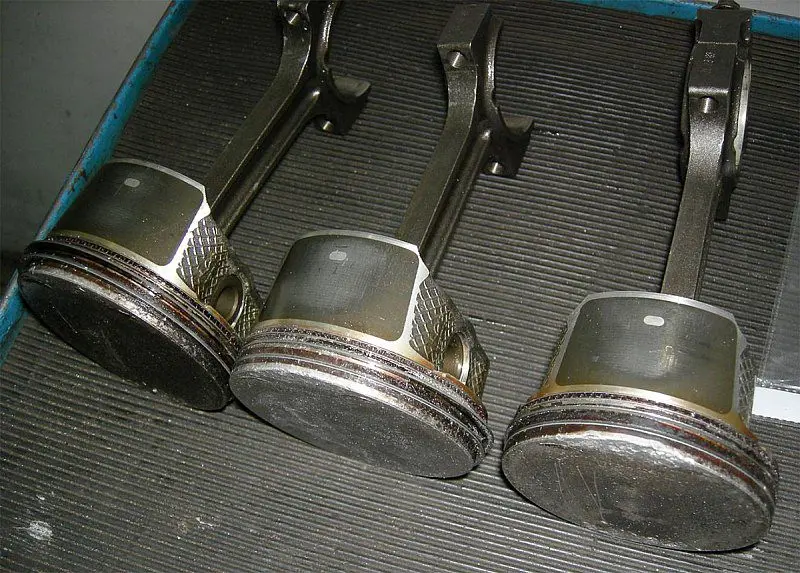
Another reason for the violation of the cylinder mirror is the use of low-quality spare parts during the overhaul of the engine. These can be cheap rings or defective pistons.
Changing the geometry of a cylinder
During the operation of the power unit, the geometry of the cylinders gradually changes. Of course, this is a long process, so it is typical for motors with high mileage, and those that are already approaching a major overhaul.

To determine this malfunction, it is required to take the car to a service station. The procedure is performed using special equipment, so it cannot be performed at home.
The occurrence of rings
Compression and oil scraper rings are made with slightly larger diameters than pistons. They have a slit on one side that allows the ring to be compressed during installation. Over time, when using bad oil or fuel and the formation of carbon deposits, the ring sticks to the piston groove, which leads to the leakage of the cylinder-piston group.
Also, the formation of carbon deposits on the rings disrupts the heat removal from the cylinder wall. Often in this case, bluish smoke is formed when the vehicle is accelerating. This problem is accompanied by a decrease in compression, and with it the dynamics of the car.
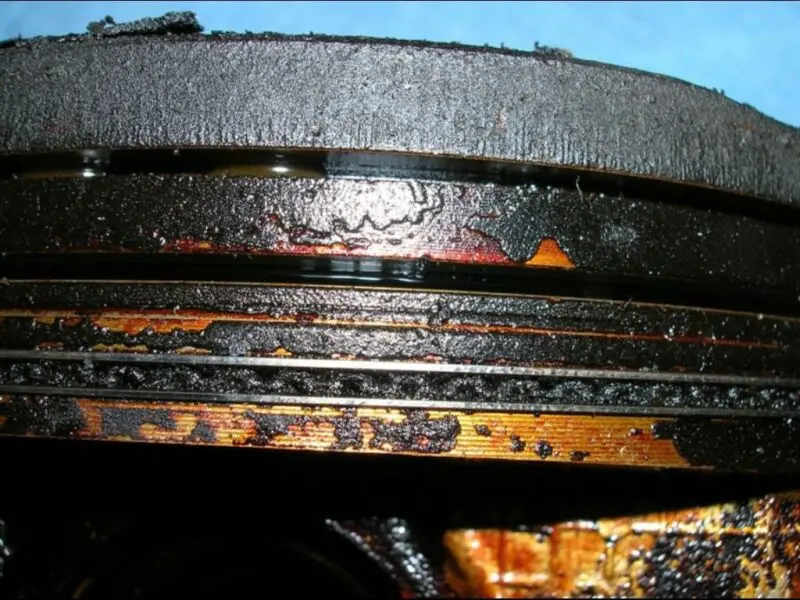
Another reason for the appearance of gray smoke from the exhaust is a malfunction in the crankcase ventilation. The high pressure crankcase gas looks for where to go and creates a greater pressure of oil, which begins to squeeze out between the piston rings. To remedy this problem, check the oil separator located on the top of the engine (in older classic cars) under the oil filler neck.
Unusual causes of blue smoke
In addition to the listed malfunctions, the formation of blue smoke can occur in more rare, non-standard situations. Here are some of them:
- The new car began to smoke. Basically, a similar effect appears when the internal combustion engine is warming up. The main reason is parts that have not rubbed off to each other. When the motor reaches the operating temperature range, the gap disappears between the elements, and the unit stops smoking.
- If the machine is equipped with a turbocharger, the oil can smoke even if the cylinder-piston group and valves are in good working order. The turbine itself works due to the impact of exhaust gases on its impeller. At the same time, its elements are gradually heated to the temperature of the exhaust leaving the cylinder, which in some cases exceeds 1000 degrees. Worn bearings and sealing bushings gradually cease to retain the oil supplied for lubrication, from which some of it gets into the exhaust manifold, in which it begins to smoke and burns out. Such a problem is diagnosed by partial dismantling of the turbine, after which the condition of its impeller and the cavity near the seals is checked. If traces of oil are visible on them, then the replaceable elements must be replaced with new ones.
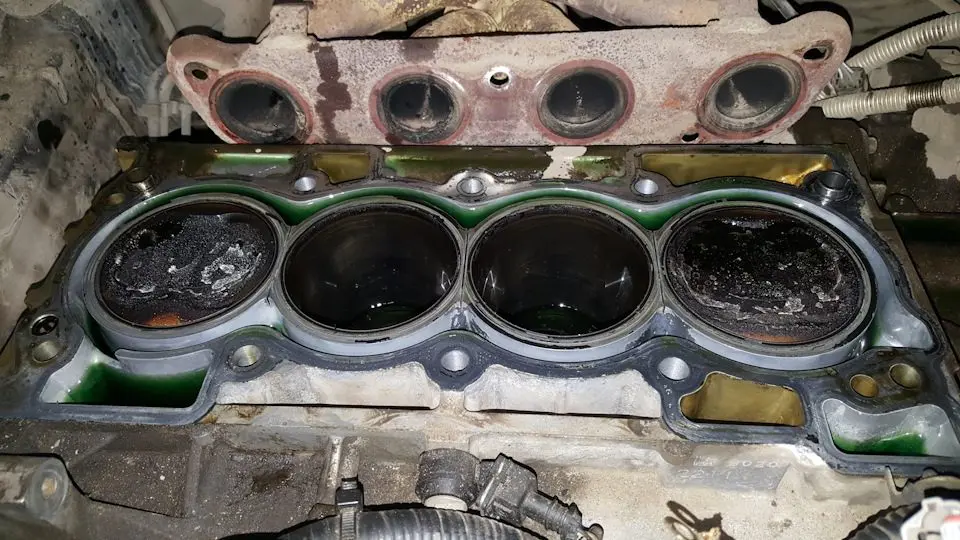
Here are some other more rare causes of oil entering cylinders or exhaust pipes:
- As a result of frequent detonation of the motor, rings or bridges on the pistons break;
- When the unit overheats, the geometry of the piston skirt may change, which leads to an increase in the gap, which is not eliminated by the oil film;
- As a result of a water hammer (about what it is, and how to protect the car from such a problem, read in another review) the connecting rod may be deformed. A similar problem can appear when the timing belt is torn (in some engines, a torn belt does not lead to contact between pistons and open valves);
- Some car owners deliberately use low-quality lubricants, thinking that all products are the same. As a result - carbon deposits on the rings and their occurrence;
- Overheating of the engine or some of its elements can lead to spontaneous ignition of the fuel-air mixture (this often leads to detonation) or glow ignition. As a result - rolling of piston rings, and sometimes even a wedge of the motor.
Most of the listed symptoms relate to more advanced cases. Basically, the problem occurs in one cylinder, but it is not uncommon for the problem to appear in several "bowlers". At the first changes in the color of the exhaust, it is worth checking the compression of the internal combustion engine and the condition of the candles.
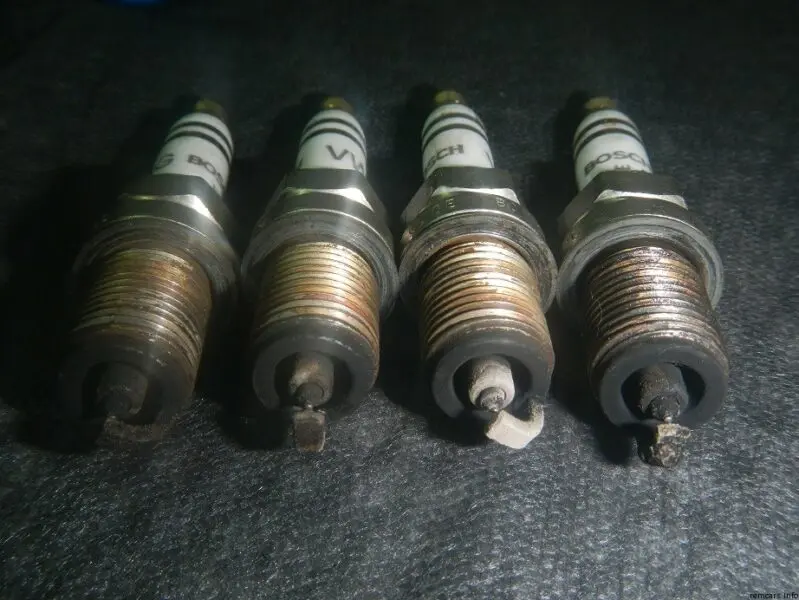
Conclusions
The list of the main reasons for the appearance of bluish exhaust from the pipe is not so long. Basically, these are valve seals, worn rings or, in a more neglected case, a scratched cylinder. It is permitted to ride such vehicles, but this is at your own peril and risk. The first reason is that blue smoke indicates oil consumption - it will need to be topped up. The second reason is that riding on a faulty motor leads to excessive wear of some of its parts.
The result of such operation will be excessive fuel consumption, a decrease in the dynamics of the car, and, as a result, a breakdown of any part of the unit. It is best to immediately go for a diagnosis when a characteristic smoke appears, so that later you do not waste a lot of money on subsequent repairs.
Questions and answers:
What to do if blue smoke comes out of the exhaust pipe? In new cars or after a major overhaul of the internal combustion engine, you need to wait a bit until the parts are worn down. In other cases, you will have to go for repairs, as this is a sign of a malfunction of the internal combustion engine.
Why does the car have blue smoke? This is due to the fact that in addition to fuel, oil also gets into the cylinders. Normally, the oil burns out about 0.2% of the fuel consumption. If the waste has increased to 1%, this indicates a motor malfunction.
